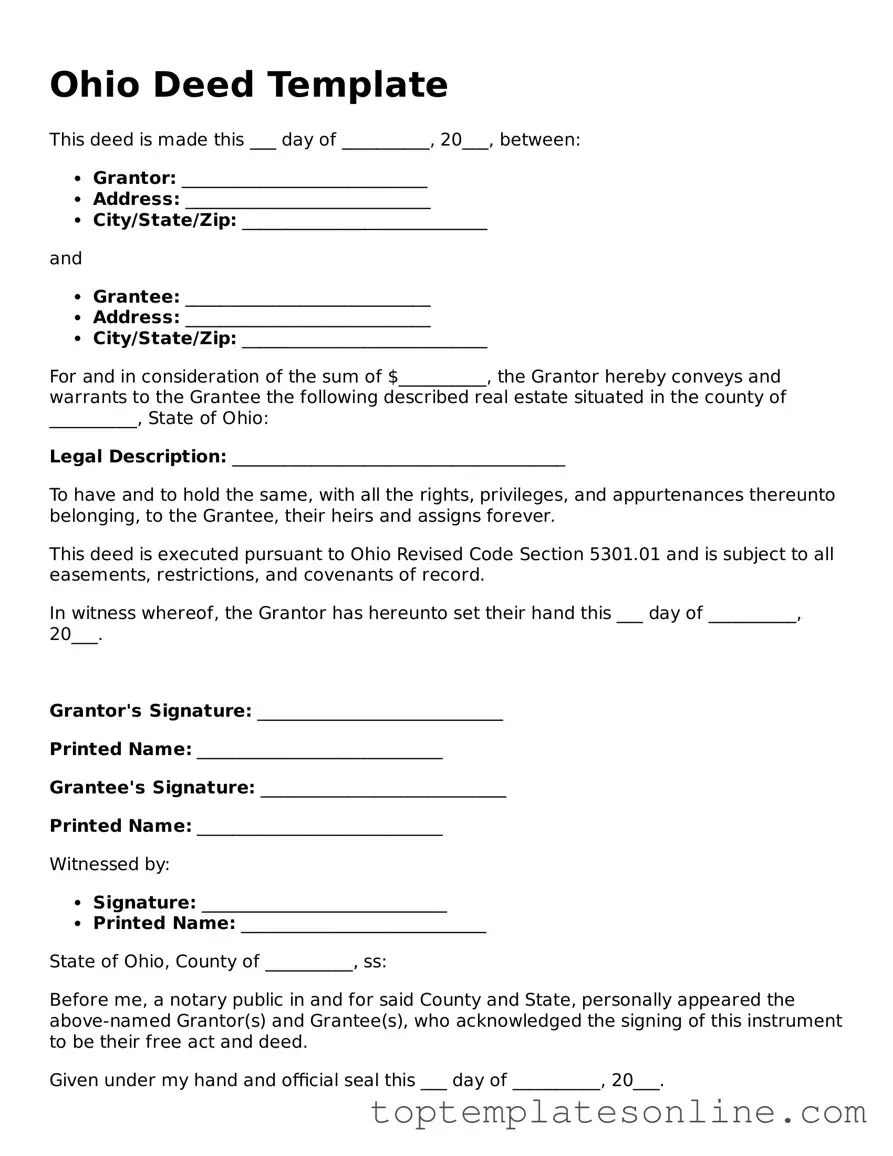The Ohio Deed form serves as a crucial document in the realm of real estate transactions, facilitating the transfer of property ownership from one party to another. This form encompasses essential elements such as the names of the grantor and grantee, a clear description of the property, and the legal language necessary to execute the transfer. It is important to note that the deed must be signed by the grantor, and in some cases, it may require notarization to ensure its validity. Different types of deeds exist within Ohio, including warranty deeds and quitclaim deeds, each serving specific purposes and offering varying levels of protection to the grantee. Additionally, the form must be properly recorded with the county recorder's office to provide public notice of the ownership change. Understanding these components is vital for anyone involved in a property transaction in Ohio, as they lay the foundation for a legally binding agreement and safeguard the rights of all parties involved.
